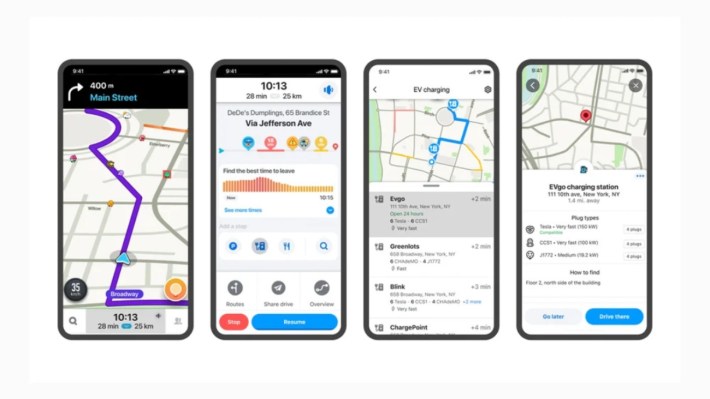Google-owned mapping app Waze is adding a new feature that seeks to help EV owners find a compatible charger en route. Users, once they have entered their vehicle model and plug type into the app, will be able to find the nearest EV charging stations, Waze said Tuesday.
To avoid outdated and unreliable information about chargers, Waze said it is leveraging assistance from its community map editors. They will ensure that details about these stations are accurate and up to date.
“By adding up-to-date EV charging information to the Waze map, it’s even easier to charge your car and get help finding where or when you’ll come across the next station,” the company said in a blog post.
“Thanks to local Map Editors from our Waze Community, EV data is reviewed and updated in real-time to provide the most accurate, comprehensive information to the map.”
Waze said that this new feature will be rolling out to users worldwide in the next few weeks. A report from Electrek, however, indicates that the EV Charger finding feature is currently not working as intended for some users — showing them gas stations instead of chargers.
Last year, Google updated the Maps app to let EV owners find a charger based on the plug type of their vehicle. Last month, the company went a step further and integrated features like Maps into some EVs from manufacturers such as Polestar, Volvo, General Motors and Renault. Over the last few years, the company has also expanded its feature to find eco-friendly routes for different vehicles.
In December, the search giant combined Google Maps and Waze teams as a cost-cutting measure.
A Waze spokesperson replied: The EV feature is rolling out globally starting yesterday and already available in countries including Albania, Bosnia, Brazil, Chile, Estonia, Hungry, Iceland, Israel, Italy, Latvia, Lithuania, Luxemburg, Mexico, Moldova, Monaco, New Zealand, Poland, San Marino, Serbia, Singapore, Slovakia, and Sweden. It will be fully available in the US around mid April, but slowly rolling out to users now, which is why the feature may not be working on some users’ phones.
